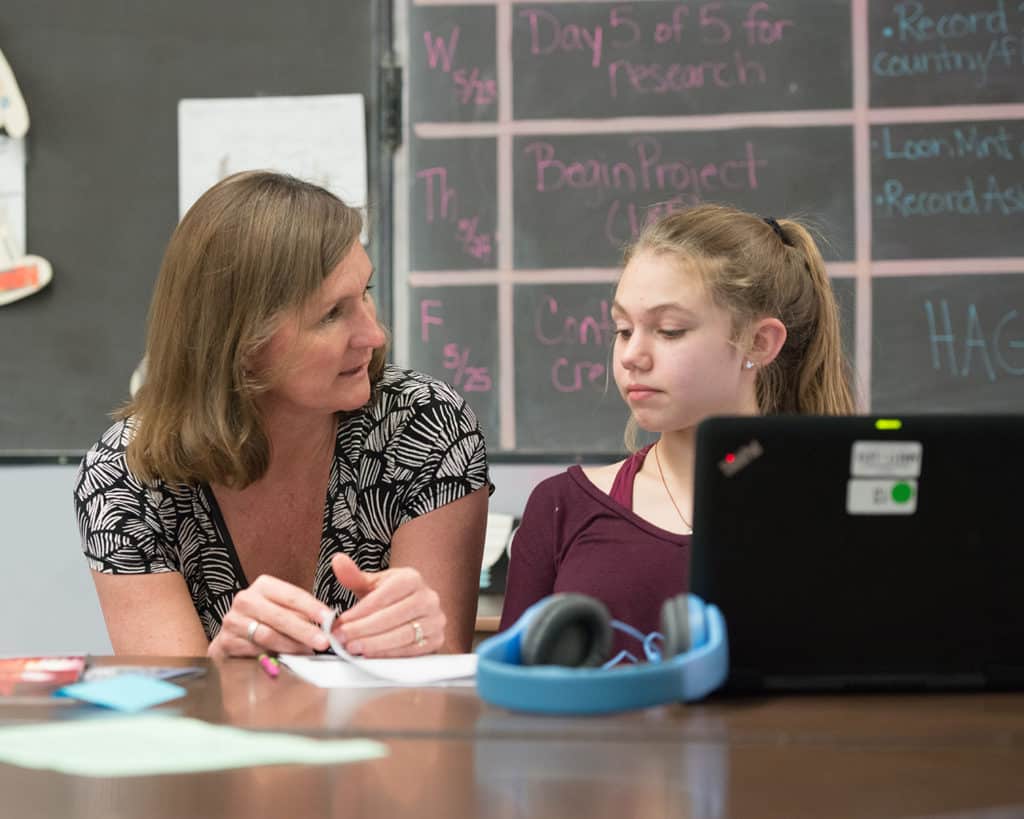Logical Consequences

Logical consequences are a key practice in the Responsive Classroom approach to discipline. A logical consequence is a non-punitive response to misbehavior that allows teachers to set clear limits and students to fix and learn from their mistakes while maintaining their dignity. Depending on the child and the situation, teachers might combine a logical consequence with other strategies, or they might use more than one logical consequence. There are three types of logical consequences.
Three Types of Logical Consequences
1. “You break it, you fix it”
This type of logical consequence is used in situations when something has been broken or a mess has been made—whether accidentally or intentionally. The consequence is that those responsible for the problem take responsibility for fixing it. Teachers use this type of logical consequence when they see an opportunity for a child to solve a problem he or she has caused.
Examples:
- Adam jiggles the table and causes water to spill. The teacher directs Adam to clean it up.
- Jana accidentally knocks Pedro down on the playing field. The teacher prompts Jana to help Pedro up, ask if he’s OK, and go with him to get first aid if needed.
2. Loss of Privilege
This type of logical consequence is used when children’s behavior does not meet pre-established expectations. The consequence is that the child loses the privilege of participating in an activity or using materials for a brief time, usually a class period or a day. What’s taken away must be directly related to the misbehavior, and the teacher must make sure that the child truly understands and can live up to expectations. Teachers use this type of logical consequence when children defy, test, or simply forget the rules.
Examples:
- Dana insists on using the watercolor brush in a way that damages its bristles. The teacher tells Dana that she cannot use watercolors during choice time until she’s reviewed correct use of the brush and shown the teacher that she knows how to use it without damaging it.
- Garth’s class job for the week is line leader, but as he leads the class to lunch, he leans into a classroom to wave hello to a friend. The teacher tells Garth that he has lost the privilege of being line leader for the day and temporarily gives that responsibility to another child. Later, she checks in with Garth to make sure he remembers and understands the expectations for walking in line.
3. Positive Time-Out
This type of logical consequence, which is known in middle school as “Space and Time,” is used when a teacher believes that a child needs a way to calm down and recover self-control. The consequence is that the child moves to a pre-established place in the classroom, takes time to regroup, and then rejoins the class once he or she has calmed down. Teachers use time-out to keep minor misbehaviors—intentional and accidental—from escalating and becoming disruptive, and to give children opportunities to practice strategies they’ve learned for regaining self-control. Because many children have experienced punitive uses of time-out, it’s important for teachers to explain that “in this class, time-out simply gives us the time and space we all sometimes need to get ourselves in check when we begin to lose our cool.”
Example:
- Mark disrupts a math lesson by calling out answers without raising his hand. The teacher sends him to the time-out place. In the minute or two he spends there, Mark calms down using self-calming techniques the class has learned, and then returns to his regular seat.
Goals of Logical Consequences
- Stop the misbehavior
- Keep everyone safe
- Preserve the child’s dignity
- Get the child back to productive learning as soon as possible
- Help children see how their behavior affects their own and their classmates’ learning
When to Use a Logical Consequence
- When the teacher and the student are calm
- When students break the rules
- When simple cues and language are not effective
Popular Articles about Logical Consequences
- How Logical Consequences Are Different From Punishment
- Five Discipline Strategies That Preserve Dignity
- Ways To Address Common Behavior Challenges That Pop Up Midyear
- Discipline Strategies for the End of the Year
Further Resources
For a more comprehensive look at logical consequences, check out:
- Rules in School
- Teasing, Tattling, Defiance & More
- Responsive School Discipline
- Teaching Children to Care
- Teaching Self-Discipline
A closer look at how to use logical consequences in your classroom is also available in our core and advanced courses, as well as our workshop Responding to Misbehavior.
Tags: Challenging Behaviors, Logical Consequences, Misbehavior